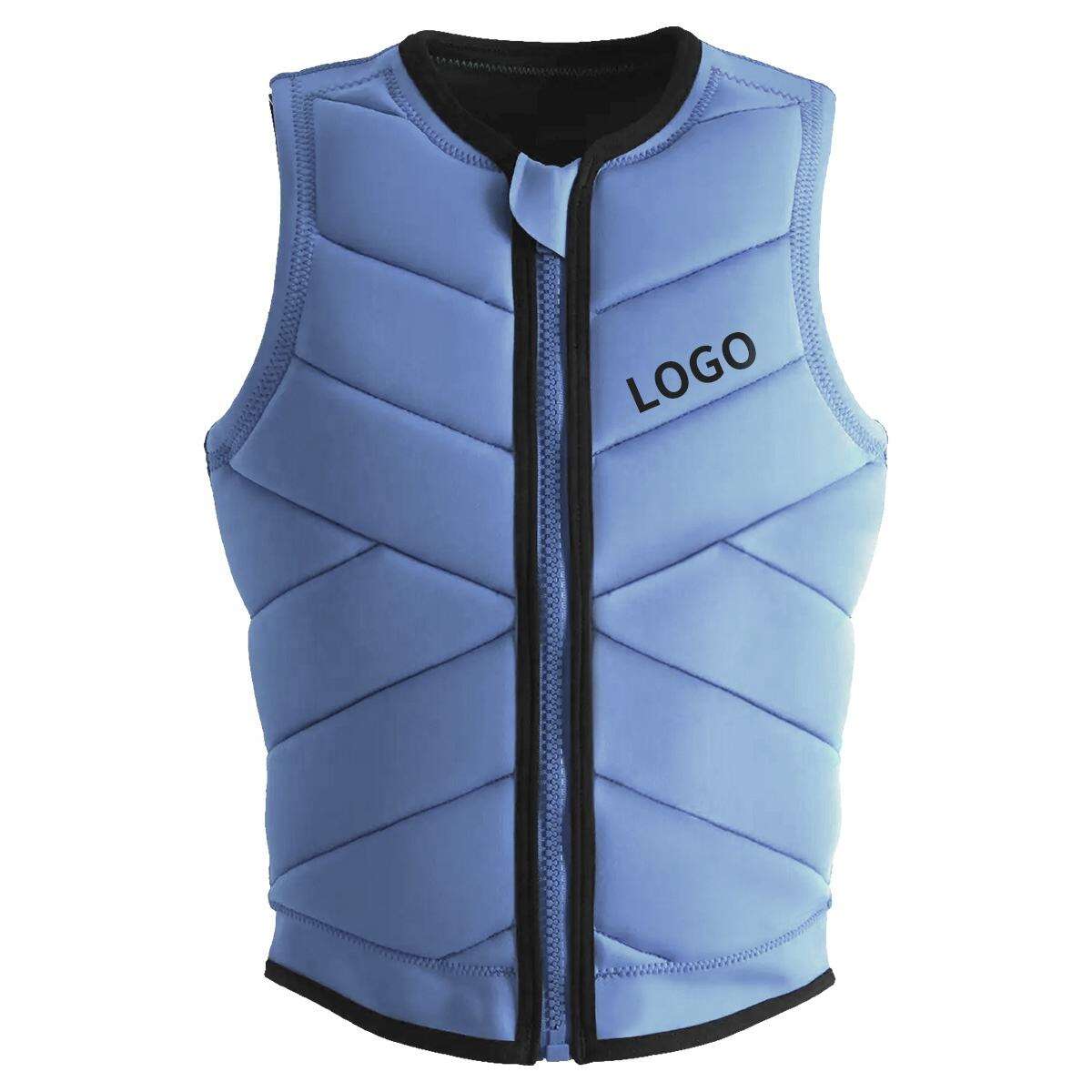Přehled bezpečnosti ve vodě by byl neúplný bez diskuse o záchranářských vestách a osobních plavacích zařízeních (PFD). Každý typ záchranářské vesty má jiné využití a pochopení toho, jak všechny typy spolu souvisejí, je klíčové, pokud chcete mít na vodě pohodlný a bezpečný zážitek. Cílem tohoto průvodce je vysvětlit různé druhy dostupných záchranářských vest, jejich konkrétní účel a způsob výběru vhodného typu podle vašich aktivit.
Různé typy záchranářských vest
Podle Americké pobřežní stráže (United States Coast Guard) jsou záchranářské vesty rozděleny do čtyř hlavních kategorií, a to typ I, typ II, typ III a typ IV. Každá varianta má svůj vlastní účel a je vhodná pro konkrétní prostředí nebo aktivity.
- Záchranářské vesty typu I: běžně nazývané životní vesty pro pády do moře, vesty typu I jsou určeny pro otevřené a drsné vody, kde může záchrana trvat. Vzhledem k těmto okolnostem mají nejvyšší vztlak a v případě potřeby obrátí bezvládnou osobu obličejem vzhůru. Tyto vesty jsou nejvhodnější pro plavce na otevřeném oceánu, komerční rybáře a osoby, které cestují hluboko do oceánu.
- Vestní životní vesty typu II - Životní vesty pro použití v blízkosti břehu jsou vhodné pro klidné vody, kde je očekávána rychlá záchrana. Rekreační plavčíci, rybáři a kajakáři považují vesty typu II za pohodlnější než vesty typu I díky menší objemovosti. Tyto vesty poskytují vztlak; neobrátí však v bezvědomí se nacházející osoby automaticky obličejem vzhůru stejně efektivně jako vesty typu I.
- Životní vesty typu III – Vesty typu III jsou nejpohodlnější a nejvíce přizpůsobitelné pro různé vodní aktivity. Poskytují větší volnost pohybu, což je ideální pro vodní lyžování, wakeboarding a kajakářské sporty. Nicméně nezajišťují tak efektivně natočení bezvědomé osoby do polohy na zádech jako vesty typu I a II, a proto jsou vhodné pro použití v oblastech, kde je možné rychlé zásahy záchrany.
- Záchytné vesty typu IV – Patří mezi ně vrhatelná zařízení, jako jsou kruhové záchytné splouvadla nebo polštáře určené pro použití v nouzových situacích. Nejsou určena k nošení, ale mohou být vržena osobám v ohrožení. Zařízení typu IV jsou nezbytností pro lodě a plavidla a slouží jako dodatečná vrstva bezpečnosti.
Výběr správné záchytné vesty
Pro zajištění bezpečnosti a pohodlí by měla být každá vesta vybrána přesně. Níže jsou uvedeny některé faktory, které je třeba zvážit:
- Typ aktivity: Zvažte, jaké aktivity jsou pro vás hlavní. Pro plavbu na volném moři je doporučena vesta typu I a pro kajakářské sporty je vhodná vesta typu III.
- Přiléhání a pohodlí: Životní vesta by měla perfektně padnout, což znamená, že by neměla být příliš volná, ale zároveň by vůbec neměla svírat. Upínací řemínky umožňují jemné přizpůsobení a tak pomáhají dosáhnout správného sednutí a těsnosti.
- Materiál a design: Kupte si vesty vyrobené z pevných materiálů, které odolávají vodě a UV záření. Zvažte také vesty s reflektory nebo jasnými barvami, které dále zlepší viditelnost.
- Certifikace: Životní vesta by měla být schválena příslušnými orgány, jako je například US Coast Guard, aby bylo zajištěno, že jsou splněny požadavky na bezpečnost.
Údržba a péče o životní vesty
Životní vesty vyžadují údržbu a náležitou péči, aby zůstaly funkční. Níže naleznete několik tipů:
- Pravidelná kontrola: Po každém použití vyhodnoťte vestu na známky opotřebení, jako jsou potrhané řemínky nebo poškozené přezky.
- Čistění : Po každém použití opláchněte životní vestu čistou vodou, abyste odstranili sůl, písek nebo chlór. Před uskladněním se ujistěte, že na ní nezůstaly žádné stopy po kapalinách.
- Uchovávání : Aby se zamezilo stárnutí záchranářských vest, vyhýbejte se otevřenému plameni a uchovávejte je na chladném, suchém místě chráněném před přímým slunečním zářením.
Trendy a inovace v průmyslu
S rostoucím důrazem na bezpečnost na vodě roste i vynalézavost a inovace záchranářských vest. Stále více výrobců využívá pokročilé materiály, které zvyšují vztlak bez přidané hmotnosti, čímž vznikají pohodovější návrhy. Navíc se vestavěné GPS systémy a technologie automatického nafukování stávají běžnějšími a dále zvyšují bezpečnost uživatelů. U ekologických produktů jsou záchranářské vesty nyní vyráběny také z udržitelných materiálů.
Shrnutí, je důležité znát různé typy záchranářských vest, aby bylo možné učinit informovanou volbu ohledně bezpečnosti na vodě. Správnou údržbou vhodné záchranářské vesty lze výrazně zajistit celkovou bezpečnost během aktivit na vodě.

